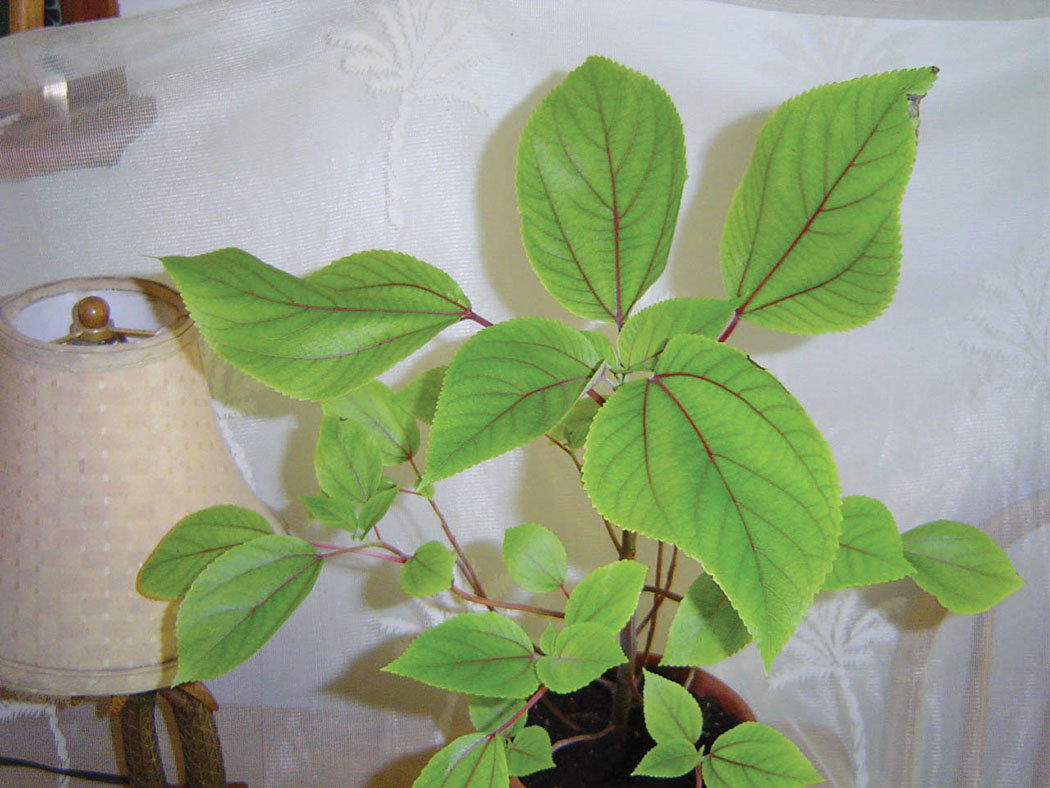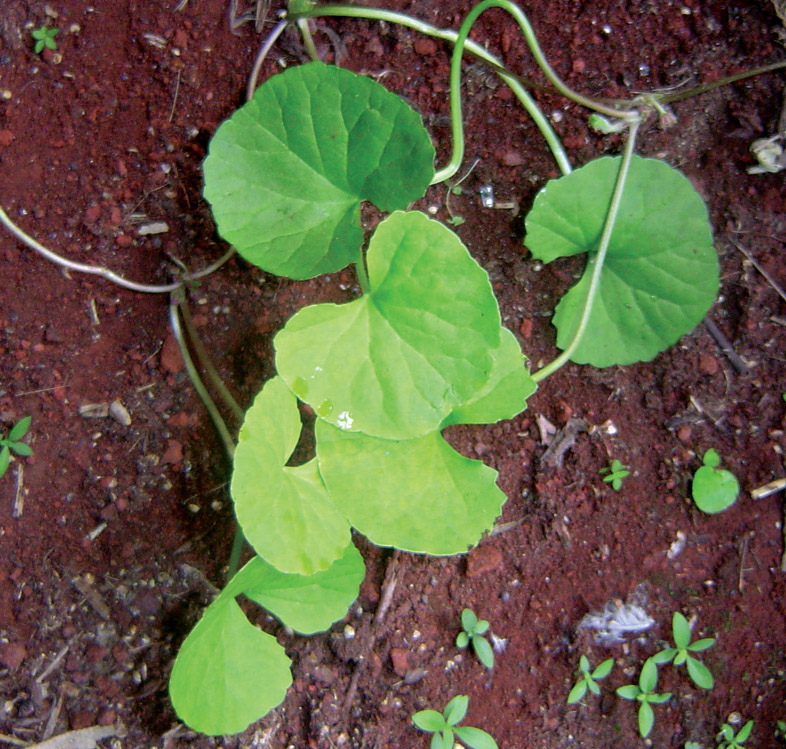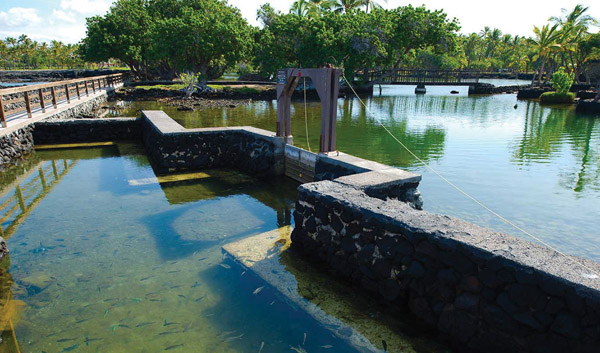Healing Plants: ‘A‘ali‘i
Attractive native for landscapes and healing
By Barbara Fahs
Many of us probably know the Hawaiian word ali‘i: it refers to a reigning noble of any kind. When an “a” is added to this word, it means “of” the royalty. The name ‘a‘ali‘i has been given to a native Hawaiian plant in the soapberry family (Dodonaea viscosa) because it was considered sacred to Laka, the hula goddess.
‘A‘ali‘i is native to all of the main islands except Kaho‘olawe. The United States Department of Agriculture reports that the same species also grows in California, Arizona, the Virgin Islands, Puerto Rico, and Florida. In Hawai‘i, it is also called ‘a‘ali‘i kū makani, which means “‘a‘ali‘i standing in wind,” due to its ability to grow where strong winds occur.
Appearance and Characteristics
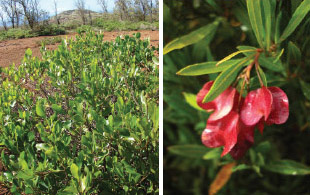 ‘A‘ali‘i is a partially woody shrub that grows in many climate zones. Although it can reach a height of 30 feet, it is usually smaller. It grows in profusion in Hawai‘i Volcanoes National Park, along the sides of Chain of Craters Road. It also grows in other dry environments, from near sea level to about 7500 feet.
‘A‘ali‘i is a partially woody shrub that grows in many climate zones. Although it can reach a height of 30 feet, it is usually smaller. It grows in profusion in Hawai‘i Volcanoes National Park, along the sides of Chain of Craters Road. It also grows in other dry environments, from near sea level to about 7500 feet.
The leaves are one to four inches long and are elliptical or lance-shaped. Leaves stand out in the landscape because they are glossy and have red stems. The plant’s most distinguishing feature is its fruits, which are triangular seedpods that range in color from pale green, yellow, pink, orange, pale red, brick red, to reddish purple, and sometimes having a mottled combination of colors.
It is important to the Hawaiian ecosystem because it serves as a host plant for the Blackburn butterfly (Udara blackburni), which is one of Hawai‘i’s two native butterfly species.
Traditional Uses
‘A‘ali‘i had numerous uses in Hawaiian society:
- It has hard, durable heartwood. Corner posts of houses sometimes included ‘a‘ali‘i wood, as did fenceposts.
- Weapons such as spears were also fashioned from the wood.
- A sticky resin covers the leaves, which turned the plant into a torch when it was ignited.
- On the culinary front, ‘a‘ali‘i’s fruit has been used instead of hops when alcoholic beverages such as beer were prepared.
- The attractive, colorful seedpods continue to be used in haku lei, which are worn around the head.
- Seedpods were also used to make a red dye, which was used to decorate kapa (tapa) barkcloth.
Medicinal Uses
The National Tropical Botanical garden reports that ‘a‘ali‘i leaves were chewed to relieve the pain of toothaches. Because these leaves contain very astringent tannic acid, toothache sufferers spat out the juice without swallowing it.
In some cultures where Dodonaea viscosa grows, it is taken internally to reduce fevers. In all parts of Hawai‘i, ‘a‘ali‘i was ground to a paste and then employed to relieve rashes.
Growing ‘A‘ali‘i for the Landscape
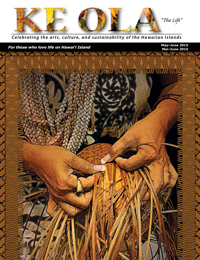
‘A‘ali‘i is a good choice in windy areas and hillsides that might be in danger of soil erosion because its roots firmly grip the soil. Currently, it is being planted on Kaho‘olawe, as an aid in environmental restoration, according to Patrick Conant, retired Hawai‘i Department of Agriculture entomologist.
It has multiple other uses in the landscape, such as an accent or container plant, a hedge or screen, a trellis or fence climber; low-growing types make a nice groundcover. It’s perfect for xeriscape gardens because it is drought tolerant.
To propagate seeds, soak them overnight in hot water. Then plant them ¼ inch deep in a sterile potting medium. Keep your pots in a shade house or under the dappled shade of a tree. Water daily: germination will begin in about 10 days. At four months, gradually expose your young plants to direct sun for one month before you plant them into pots or the garden. ‘A‘ali‘i adapts to most soil types.
Fertilize with a slow-release plant food every six months.
Pests and Diseases
Watch out for pests such as mealy bugs, black scale insect, and black twig borers (Xylosandrus compactus), also known as ambrosia beetle, which are relatives of the coffee borer beetle. If twigs or ends of branches begin to die back, prune and destroy affected parts.
Diseases of this plant rarely occur. Occasionally plants will develop sooty mold, the fungal disease known as Verticillium wilt, or a virus called Dodonaea yellows. Prevention is the best cure: be sure to give your plant adequate irrigation, fertilize regularly, and prune affected branches. ❖
Photos courtesy Forest and Kim Starr
Contact writer Barbara Fahs.
Sources:
EntnemDept.ufl.edu/creatures/trees/black_twig_borer.htm#management
Extento.hawaii.edu/kbase/crop/type/xylosand.htm
HawaiianEncyclopedia.com/part-3.asp
HawaiianEncyclopedia.com/island-flowers-and-lei.asp
Ipm.ucdavis.edu/PMG/GARDEN/PLANTS/dodonaea.html
NativePlants.hawaii.edu/plant/view/Dodonaea_viscosa
Ntbg.org/plants/plant_details.php?plantid=4259: Plants.usda.gov/core/profile?symbol=dovi
USDA Plant Fact Sheet. HOPBUSH. Dodonaea viscosa (L.) Jacq. Plant Symbol = DOVI. Contributed by: Hoolehua Plant Materials Center. David Duvauchelle.
